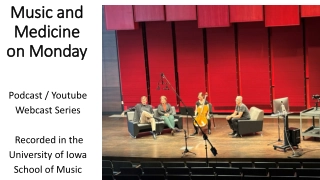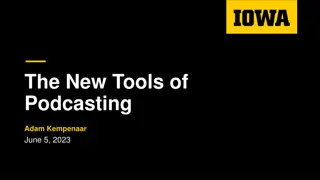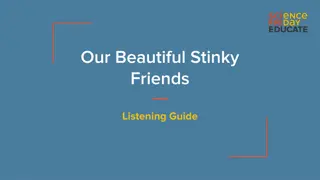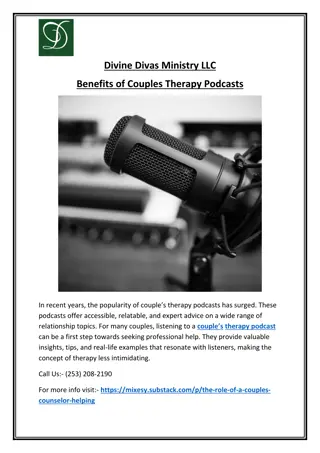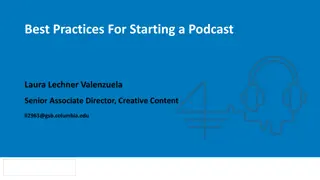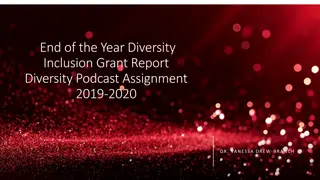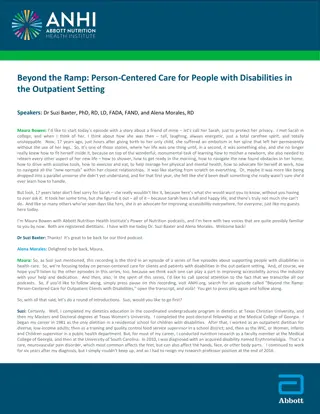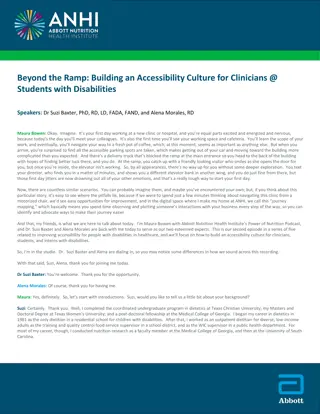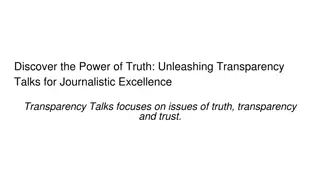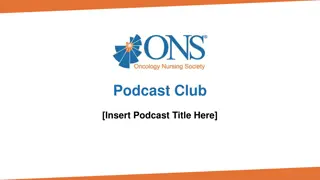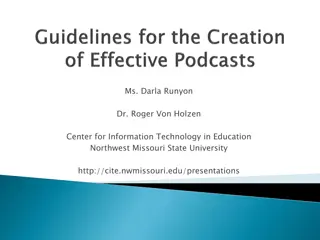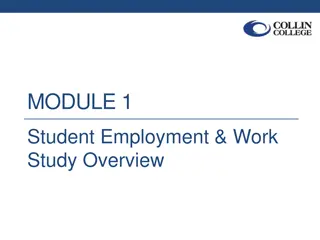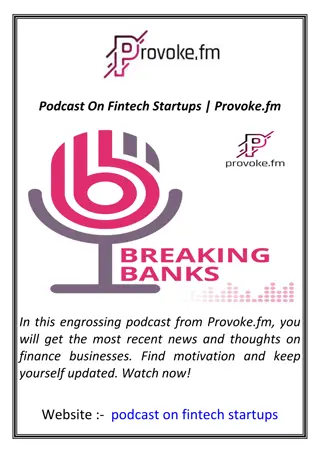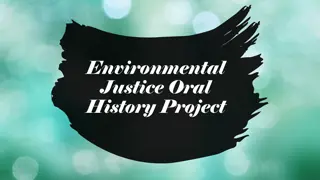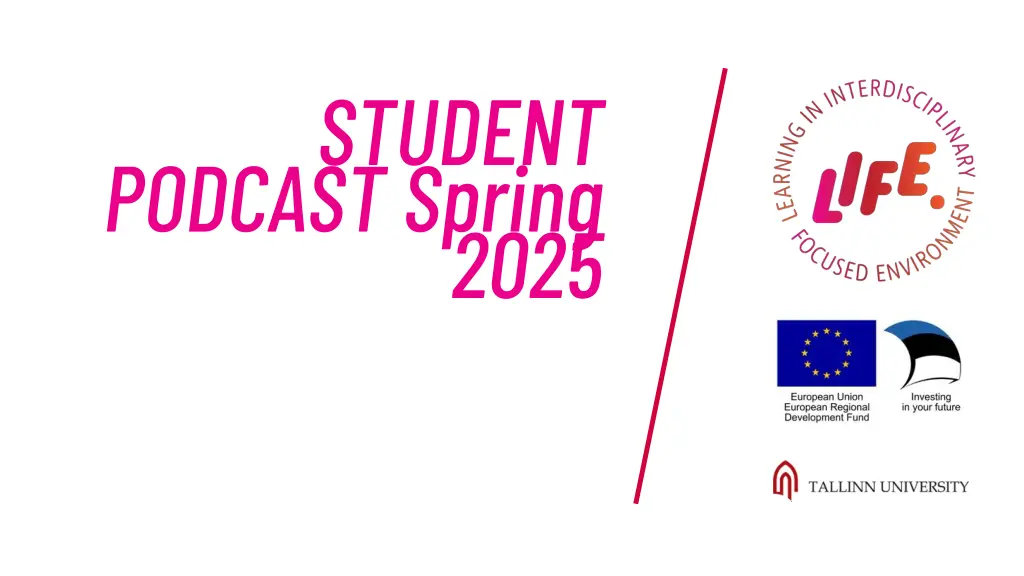
Exploring Sleep Paralysis: Debunking Myths and Providing Solutions
Dive into the realm of sleep paralysis through a scientific lens, debunking cultural myths, and offering evidence-based coping strategies for sufferers. Understand the neurological causes, compare global interpretations, and learn practical solutions to manage episodes confidently.
Download Presentation

Please find below an Image/Link to download the presentation.
The content on the website is provided AS IS for your information and personal use only. It may not be sold, licensed, or shared on other websites without obtaining consent from the author. If you encounter any issues during the download, it is possible that the publisher has removed the file from their server.
You are allowed to download the files provided on this website for personal or commercial use, subject to the condition that they are used lawfully. All files are the property of their respective owners.
The content on the website is provided AS IS for your information and personal use only. It may not be sold, licensed, or shared on other websites without obtaining consent from the author.
E N D
Presentation Transcript
STUDENT 2025 PODCAST Spring
Agenda Disciplines represented, supervisors, mentors, partners Problem, aim and importance Activities implemented Research and interdisciplinary approach Project results Conclusions
Introduction - Creation and publishing of podcast episodes based on scientific research onatopicchosenbystudents. - 4 teams,6-7memberseach - Episodes systematically published in the weeks in May leading up to thefinalpresentation
Team 2 Supervisor(s): Terry McDonald, Tanel Kadalipp Group members: Ahsan Nazir, Anna-Liisa Schon, Estere Mitule, Karolina Tupits, Lisett Aasamets, Paul Parn, Robins Svarcs
Team 2: Sleep Paralysis Podcast focus: To investigate the science behind sleep paralysis, debunk cultural myths, and provide evidence based coping strategies for sufferers. Episode goals: Explain the neurological causes (REM sleep disruption, stress triggers). Compare global cultural interpretations (e.g. Jinn in Egypt vs. medical explanations). Offer practical solutions (sleep hygiene, stress reduction) to reduce episodes.
Team 2: Sleep Paralysis Team Role: Role Responsibilities Team Members Research Analyzed 20+ studies on sleep science Ahsan,Estere, Anna-Liisa Hosts Conducted expert interview & listener Q&A Estere,Lisett, Karolina Sound recordist Audio set-up and recording Robins Sound editor Edited and uploaded the podcast Paul Scriptwriters Combined research + storytelling Lisett, Karolina Marketing Promoted via Instagram/Spotify Anna- Liisa
Team 2: Problem, significance, and goal What was the problem being solved? We tackled widespread fear and misinformation about sleep paralysis by explaining its science (REM disruption) and debunking supernatural myths. Why was it important to deal with this topic? Despite affecting about 8% of people, sleep paralysis remains shrouded in misinformation. Cultural beliefs about demon attacks or ghost visits often worsen the trauma. Through our episode, we presented neurological explanations, compared global interpretations, and gave science backed advice to help people manage episodes. What was the goal of the project or what did you want to achieve? Our podcast explained sleep paralysis scientifically (REM sleep disruption) while debunking myths, featuring expert insights from Dr. Katrin P ld and practical prevention tips like sleep positioning and stress management. Through this approach, we transformed fear into understanding, helping sufferers manage episodes confidently. How do you know you've reached your goal? Our listeners told us they finally understood sleep paralysis better, and the episode reached enough of people on Spotify.
Team 2: Implementation of activities - - - - - Deciding on the topic and dividing work Conducting research and writing the script Interviewing our expert guest Recording and Editing Publishing the episode and promotion
Team 2: Stakeholders TU Students Primary audience, gained scientific understanding of sleep paralysis. Dr. Katrin P ld Shared expert knowledge with a broader public audience. Mental Health Groups Used the episode as an educational tool. General Public Demystified sleep paralysis through accessible science.
Team 2: Interdisciplinary approach and research basis -Our podcast combined neuroscience, psychology, and cultural studies to fully explain sleep paralysis. -We analyzed medical studies on REM sleep, surveyed real experiences, and compared global folklore to show how science and culture interpret this phenomenon differently.
Team 2: Challenges Guest Scheduling:Difficulty coordinating with Dr. P ld s busy schedule. Listener Fear: Addressing sensitive experiences without causing distress. Time Management:Balancing research, production, and academic deadlines.
Team 2: Sources Benham, G. (2022). Sleep paralysis in college students. Journal of American College Health, 70(5), 1286 1291. Drinkwater, K. G., Denovan, A., & Dagnall, N. (2020). Lucid Dreaming, Nightmares, and Sleep Paralysis: Associations With Reality Testing Deficits and Paranormal Experience/Belief. Frontiers in Psychology, 11. https://doi.org/10.3389/fpsyg.2020.00471 Hlodak, J., Madarasova Geckova, A., Carnakovic, S., & Feketeova, E. (2025). What is it like to live with narcolepsy? A scoping review. Sleep and Breathing, 29(1), 93. https://doi.org/10.1007/s11325-025-03259-6 Jalal, B., Romanelli, A., & Hinton, D. E. (2021). Sleep paralysis in Italy: Frequency, hallucinatory experiences, and other features. Transcultural Psychiatry, 58(3), 427 439. https://doi.org/10.1177/1363461520909609 Jim nez-Genchi, A., Avila-Rodr guez, V. M., S nchez-Rojas, F., Terrez, B. E. V., & Nenclares-Portocarrero, A. (2009). Sleep paralysis in adolescents: The a dead body climbed on top of me phenomenon in Mexico. Psychiatry and Clinical Neurosciences, 63(4), 546 549. https://doi.org/10.1111/j.1440-1819.2009.01984.x
Team 2: Sources Khan, A. A., Abid, A., Nawaz, M., Mohammad Makki Bakhsh, R., Riaz, M., Fayyaz, M., & Ashraf, D. A. (2024). Experiences and beliefs related to sleep paralysis among the general population of the twin cities: A cross-sectional study. Sleep Medicine, 124, 146 153. https://doi.org/10.1016/j.sleep.2024.09.022 Mayer, G. A. (2016). Sleep Paralysis: Historical, Psychological, and Medical Perspectives by Brian A. Sharpless and Karl Doghramji. Journal of Scientific Exploration, 30(1). https://research.ebsco.com/linkprocessor/plink?id=2fb3e9b4-fff5-38d1- 9af4-3b64f17880cf Restivo, J. (2023, October 20). Sleep paralysis: Causes, symptoms, and treatments. Harvard Health.
Team 2: Sources https://www.health.harvard.edu/diseases-and-conditions/sleep-paralysis-causes-symptoms-and-treatments https://www.mayoclinic.org/diseases-conditions/narcolepsy/symptoms-causes/syc-20375497 https://pmc.ncbi.nlm.nih.gov/articles/PMC11344621/ https://en.wikipedia.org/wiki/Narcolepsy https://my.clevelandclinic.org/health/diseases/12147-narcolepsy https://www.ninds.nih.gov/health-information/disorders/narcolepsy
Team 3 Supervisor(s): Terry McDonald, Tanel Kadalipp Group members: LIISI REINMAN, PAULINATHANJ RGENS, REBEKAPETTAI, REIOASTLA, MARGARITA IRNOVA, JURI UKOV
Team 3: Blue Zones Podcast focus: The podcast focuses on critically examining the concept of Blue zones and its relevance in today's society. Episode goals: The goal of the episode is to present a scientific perspective and debunk common myths about longevity. Team Role: Each team member was responsible for different stages of the project from research and scripting to recording, editing, and promotion.
Team 3: Problem, significance, and goal What was the problem being solved? We noticed the topic of Blue Zones is popular globally but rarely discussed critically ib Estonia. There was a lack of accessible, science-based content in Estonian medea. Why was it important to deal with this topic? Many people are influenced by health trends without understanding their background. We wanted to hel our audience think more critically about such concepts. What was the goal of the project or what did you want to achieve? Our goal was to produce an engaging podcast that both informs and challenges common beliefs about longevity. We also wanted to improve our own media literacy and teamwork skills. How do you know you've reached your goal? We successfully published the episode and received meaningful feedback from listeners. The topic sparked discussion, showing that content made an impact.
Team 3: Implementation of activities Deciding on a topic and dividing work We started by choosing a topic that was both socially relevant and personally interesting to all team members. Then we divided responsibilities based on our strengths and interests. Conducting theoretical research and writing the script Each team member researched the Blue Zones concept from academic and media sources. We collaborated to write a balanced script that combined facts with critical insights. Conducting interview with our guest We contacted Michel Poulain, a co-author of the Blue Zones concept, and organized an in-depth interview. His insights gave our podcast a unique and credible perspective. Recording and editing audio We recorded the episode in the university studio and worked together on editing to ensure high sound quality. This process also helped us develop new technical and communication skills. Publishing the episode and promotion The episode was uploaded to Spotify and shared through social media and university channels. We received feedback from listeners, which confirmed that the episode sparked interest and reflection.
Team 3: Stakeholders - - - - General public Urban planners and local authorities Academic institution Medea and content creators Our guest: Michel Poulain, a co-author of the Blue Zones concept
Team 3: Interdisciplinary approach and research basis Our team brought together diverse academic backgrounds, which allowed us to approach the topic of Blue Zones from multiple angles including psychological, social, cultural, and media perspectives. This interdisciplinary approach enriched our understanding of the factors influencing longevity and well-being. Our research was based on a variety of sources: scientific articles, official studies, documentaries, expert interviews, and critical analyses, ensuring a well-rounded and evidence-based exploration of the topic.
Team 3: Challenges Coordinating schedules between team members Contacting and scheduling time with an expert
Team 3: Episode statistics 0 streams/downloads Median consumption: 6s (first 7days) 9 plays, 1 consumption hour
Team 3: Sources Trichopoulou, A., Costacou, T., Bamia, C., & Trichopoulos, D. (2003). Adherence to a Mediterranean diet and survival in a Greek population. New England Journal of Medicine, 348(26), 2599 2608. https://doi.org/10.1056/nejmoa025039 Gardener, H., & Caunca, M. R. (2018). Mediterranean diet in preventing Neurodegenerative Diseases. Current Nutrition Reports, 7(1), 10 20. https://doi.org/10.1007/s13668-018-0222-5 Poulain, M., Herm, A., & Pes, G. (2014). The blue zones: Areas of exceptional longevity around the world. Vienna Yearbook of Population Research, Volume 11, 87 108. https://doi.org/10.1553/populationyearbook2013s87 https://research-ebsco-com.ezproxy.tlu.ee/c/w7ncf6/viewer/html/axjxn73ojz - critique https://research-ebsco-com.ezproxy.tlu.ee/c/w7ncf6/viewer/pdf/qhhxhf34bz - different opinions from the founders of the idea https://www.frontiersin.org/journals/pharmacology/articles/10.3389/fphar.2024.1428111/full - why the life expectancy is higher https://bhacjournal.org/index.php/BHAC/article/view/9758/8165 - Introducing blue zones to local (TL ) students. Perhaps we introduce a segment where we local students answer what could be changed. Newman S.J. (2024). Supercentenarian and remarkable age records exhibit patterns indicative of clerical errors and pension fraud. doi: https://doi.org/10.1101/704080 Netflix documentary Live to 100: Secrets of the Blue Zones
Team 4 Supervisor(s): Terry McDonald, Tanel Kadalipp Group members: Halima Ahmed, Viivi Salo, Maria Aldona Krajewska, Saana Siltala, Vilja Jansen, Ksenija Jerofejeva, Katrin Potapenko
Team 4: Women in Diplomacy Podcast focus: To examine how female representation progressed throughout the years and what are some steps that can be taken to ensure female empowerment is the diplomatic field. Episode goals: Provide a general overview of the history of female diplomacy, compare various regions of the world in regard to female representation and provide suggestions for the future. Team Role: All team members conducted research on the topic. Other roles included: 2 hosts, audio editor, script writers, marketing team
Team 4: Problem, significance, and goal What was the problem being solved? We wanted to bring to the general public s attention the need for female empowerment in te field of diplomacy. We also wanted to use the episode as a way of motivating young girls looking to becoming diplomats Why was it important to deal with this topic? Despite numerous efforts to empower women in various spheres, diplomacy still remains a male-dominated field. Through our episode, we wanted to bring to light statistics about women in diplomacy from various parts of the world and also present ideas as to what needs to be done to ensure female empowerment in diplomacy. What was the goal of the project or what did you want to achieve? We wanted to educate listeners on the need for empowerment and also interview a female diplomat who could give us insight into what it means to work in diplomacy. How do you know you've reached your goal? The success of the episode will be based on statistics from Spotify.
Team 4: Implementation of activities - - - - - Deciding on a topic and dividing work Conducting theoretical research and writing the script COnducting interview with our guest Recording and editing audio Publishing the episode and promotion
Team 4: Stakeholders - - - Diplomatic institutions Scholars Women and girls wanting to become diplomats Our guest: Her Excellency Nargiz Gulbanova, firs career ambassador of Azerbaijan, currently stationed in Warsaw, Poland
Team 4: Interdisciplinary approach and research basis The basis of our scientific research was the feminist theory within International Relations. It was used as a basis for showcasing empowerment in the diplomatic field. All of our team members come from different academic backgrounds and did research within their spheres of expertise and interests, making the episode informative and diverse.
Team 4: Challenges - Finding suitable time for conducting the interview. It was conducted in person in Warsaw Finding place to record Project timeframe - -
Team 4: Sources Carver, T., Zalewski, M., Kinsella, H., & Carpenter, R. C. (2003). Gender and International Relations. International Studies Review, 5(2), 287 302. 1. http://www.jstor.org/stable/3186423. 2. Keohane, Robert O. Beyond Dichotomy: Conversations between International Relations and Feminist Theory. International Studies Quarterly 42, no. 1 (1998): 193 97. http://www.jstor.org/stable/2600824. 3. Vastapuu K and Lyytik inen M, Gender Equality in Foreign Affairs (Ministry for Foreign Affairs of Finland 2021) 4. Anwar Gargash Diplomatic Academy, Women in Diplomacy Index 2024 (2024) 5. United Nations Regional Information Centre, Women in Diplomacy: Breaking the Glass Ceiling and Overcoming Sobriety (2023) 6. 7. 8. 9. Eglitis, D. S. (2024). Women in Baltic politics and political leadership.Foreign Policy Research Institute United Nations Entity for Gender Equality and the Empowerment of Women, 'UN Women and Finland: Partners for Change' (2021) Hala Maher, 'Breaking Barriers: Women Leading the Way in Finnish Diplomacy' (LinkedIn, 15 March 2025) Organisation for Economic Co-operation and Development, 'Advancing Gender Equality as a Foreign Policy Priority through Finnish Development Co-operation' (OECD Development Co-operation Tips, Tools, Insights, Practices, 2025)
Team 5 Supervisor(s): Terry McDonald, Tanel Kadalipp Group members: GEORG HENRY ROMANOV, MARTINSAARTS, KEITI UMAN, ANETTE SALUMETS, MIHKEL MARRAN, RAMONA-LYSA REIM
Team 5: How can emerging entrepreneurs contribute to strengthening national cyber resilience? This episode explores Estonia s evolving cybersecurity landscape, emphasizing how emerging entrepreneurs can play a crucial role in strengthening the country s digital resilience amid growing cyber threats. Episode goals: 1. Raise awareness of the key cybersecurity challenges facing Estonia, including threats to data protection, critical infrastructure, and digital sovereignty. Highlight the role of young entrepreneurs and startups in driving cybersecurity innovation and supporting national resilience. Encourage collaboration between government institutions, private businesses, and emerging tech leaders to build a more secure digital society. 2. 3.
Team 5: Problem, significance, and goal What was the problem being solved? The podcast addressed the growing cybersecurity challenges in Estonia, including sophisticated cyber threats targeting public institutions and private enterprises, and the need for greater involvement of emerging entrepreneurs in enhancing national cyber resilience. Why was it important to deal with this topic? As a global leader in digital governance, Estonia s security and reputation depend heavily on its ability to protect its digital infrastructure. Cybersecurity is not just a technical issue but a matter of national security and public trust, making it essential to engage all sectors including startups in safeguarding the digital ecosystem.
Team 5: Problem, significance, and goal 2 What was the goal of the project or what did you want to achieve? The goal was to raise public awareness of Estonia s cybersecurity landscape and to spotlight the role of innovative entrepreneurs in tackling these challenges. By doing so, the podcast aimed to foster greater collaboration between startups, government bodies, and established businesses. How do you know you've reached your goal? We know we reached our goal because people listened to the podcast, shared it, and gave positive feedback. It also started conversations about cybersecurity and got entrepreneurs and experts involved, which showed that the topic really resonated.
Team 5: Implementation of activities Research & Preparation: We reviewed cybersecurity policies, incident reports, and academic sources to understand Estonia s digital security challenges. Case studies of successful startups were also analyzed to identify effective strategies and their broader impact. Expert Interviews & Insights: We conducted interviews with cybersecurity professionals and entrepreneurs to gather diverse perspectives and real-world insights into Estonia s cybersecurity landscape and innovation potential. Podcast Production: Using the research and interviews, we developed a clear script and recorded high-quality audio. Careful editing, along with music and effects, ensured a professional and engaging final product. Promotion & Engagement: The podcast was shared through social media and relevant digital platforms to reach both general and expert audiences. The podcast was also shared in an SME thats currently focusing on Cyber Security
Team 5: Interdisciplinarity Integration of Multiple Fields: Legal studies: Understanding regulations and compliance. Business studies: Identifying practical solutions for SMEs. Social sciences: Examining public perception and behavior. Holistic Approach: Ensures cybersecurity is analyzed from technical, legal, economic, and societal viewpoints.
Team 5: Stakeholders Stakeholders: Business Oriented: Small to medium sized enterprises Research gap: Seemingly large gaps in research in cyber oriented governmental systems. Average Listener: Digital hygiene and good practices Our guest: Sharirah, Founfer of Antigon Security
Team 5: Sources - - - - - Estonian Information System Autohrity. Estonia s Cybersecurity Starts With You RIA. Cyber Security in Estonia 2025 (strategy paper). Cybersecurity Act of Estonia 2025 (strategy paper) Hybrid CoE Paper 8: Cyber Deterrence and the 2007 Lessons. Digital Watch Observatory. Cyber-Conscius Estonia: Cybersecurity Strategy 2024- 2030 Invest in Estonia. Business Opportunities: Cyber Security -

